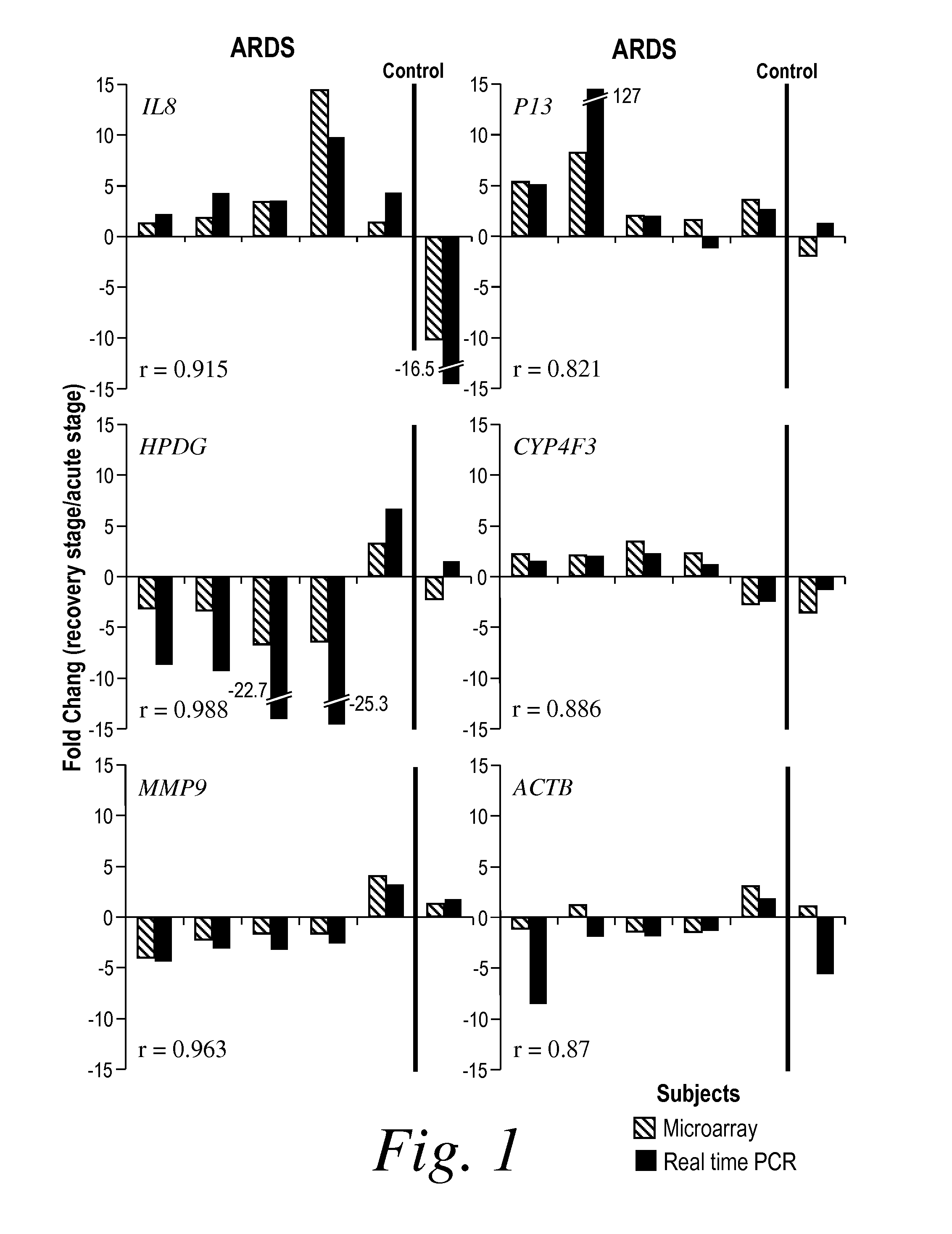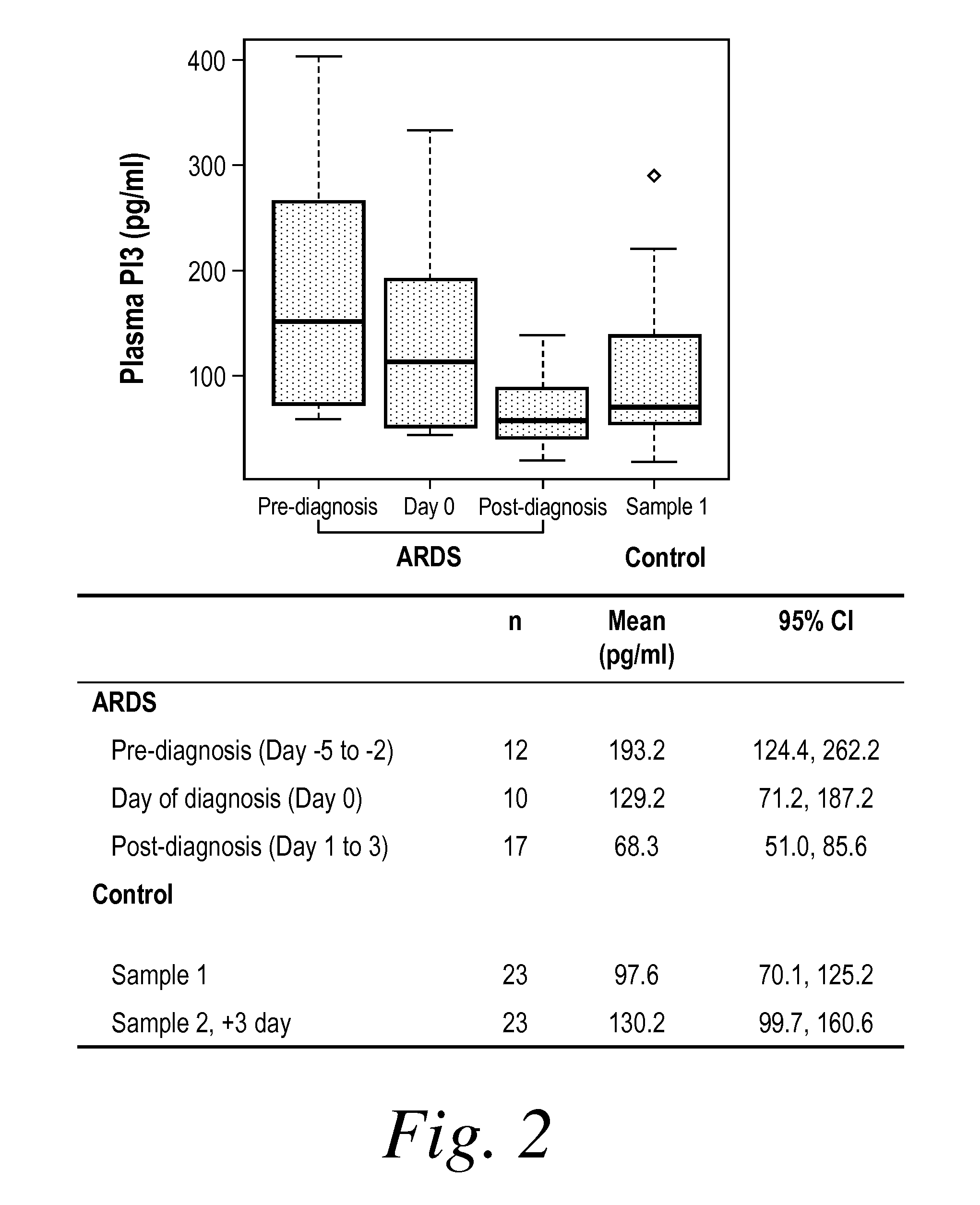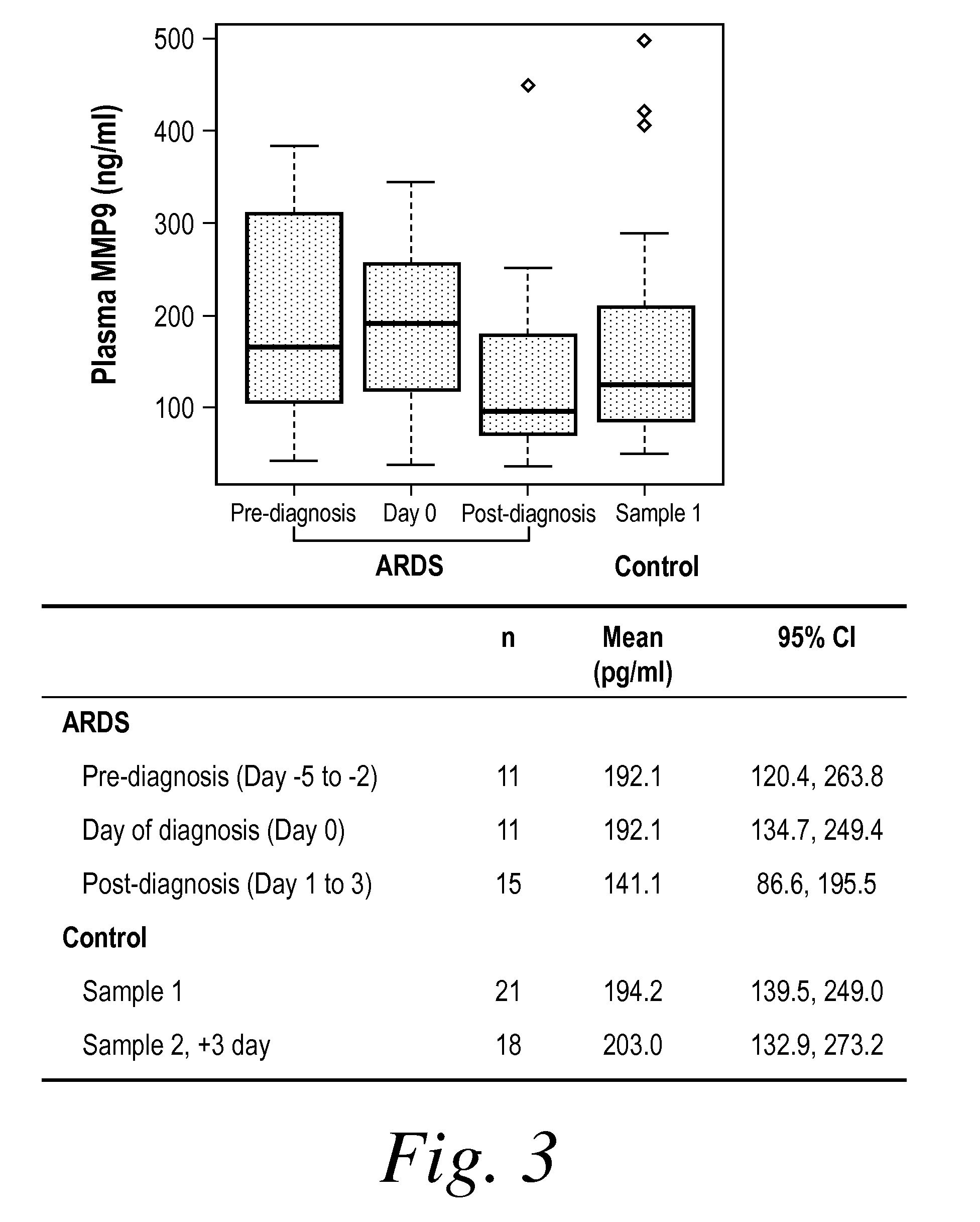Methods for predicting the development and resolution of acute respiratory distress syndrome
a respiratory distress syndrome and acute technology, applied in the field of acute respiratory distress syndrome development and resolution, can solve the problems of complex prediction of the development and progression of ards, severe, life-threatening hypoxia, and difficult alveolar damage, and achieve the effect of reducing the ratio between elafin and human neutrophil elastas
- Summary
- Abstract
- Description
- Claims
- Application Information
AI Technical Summary
Problems solved by technology
Method used
Image
Examples
example 1
Material and Methods
Study Subjects
[0189]The studies described herein were conducted within the ongoing Molecular Epidemiology of ARDS project at the Massachusetts General Hospital (MGH) and Harvard School of Public Health, both in Boston, Mass. These studies were initiated in 1999, and approved by the Human Subjects Committees of both institutions. Study subjects were recruited from subjects admitted to one of the four adult intensive care units (ICU) at MGH as described previously in Michelle Ng Gong et al. (The European Respiratory Journal. 26 (3), 382-9 Sep. 2005.) and Michelle Ng Gong et al. (Chest. 125 (1), 203-11 Jan. 2004). Eligible subjects were individuals admitted to the ICU with at least one risk factor for the development of ARDS: 1) sepsis, 2) septic shock, 3) trauma, 4) pneumonia, 5) aspiration, or 6) massive transfusion of packed red blood cells (PRBC: defined as greater than 8 units of PRBC during the 24 hours prior to admission). Subjects were followed prospectively...
example 2
Polymorphisms in Neutrophil Elastase Inhibitor (elafin / PI3) are Associated with Risk of Acute Respiratory Distress Syndrome
Method
[0209]The entire genomic sequence of PI3 gene on chromosome 20 (20q12-q13), ranging from ˜2,200 by upstream to ˜1760 bp downstream of the translation start site, in 28 anonymous DNA samples from healthy Caucasians of similar age and living in the same region of the parent study. Twenty-four polymorphisms were identified, including 21 SNP and 3 ins / del polymorphisms. Ten of them are novel polymorphisms in the studied population. Similar to a previous report (Chowdhury et al. BMC Med Genet, 2006. 7: p. 49), the analyses discussed herein describe many polymorphisms (n=9) located in the promoter region of PI3 genes with potential differential binding for at least one transcription factor. In addition, two common non-synonymous substitutions in exon 1 and exon 2 were also identified in our population. Linkage-disequilibrium (LD) structure analysis of 21 SNPs re...
example 3
Plasma Levels of PI3, SLPI and HNE in ARDS and At-Risk Controls
[0213]PI3 (elafin) and secretory leukocyte proteinase inhibitor (SLPI) are important low-molecular-weight proteinase inhibitors produced locally at neutrophil infiltration site in the lung (Schalkwijk, J., O. Wiedow, and S. Hirose, Biochem J, 1999. 340 (Pt 3): p. 569-77; Sallenave, J. M., et al., Am J Respir Cell Mol Biol, 1994. 11(6): p. 733-41; Kramps, J. A., et al., Ann N Y Acad Sci, 1991. 624: p. 97-108; Pfundt, R., et al., J Clin Invest, 1996. 98(6): p. 1389-99; Tremblay, G. M., et al., Am J Respir Crit Care Med, 1996. 154(4 Pt 1): p. 1092-8). In contrast to SLPI, PI3 (elafin) has a narrow spectrum of inhibition specifically toward human neutrophil elastase (HNE) and proteinases 3, mainly released by activated neutrophils, which play a crucial role in the initiation and propagation of ARDS (Weiland, J. E., et al., Am Rev Respir Dis, 1986. 133(2): p. 218-25). Considerable evidence exists for the role of neutrophil-de...
PUM
| Property | Measurement | Unit |
|---|---|---|
| time | aaaaa | aaaaa |
| time | aaaaa | aaaaa |
| volume | aaaaa | aaaaa |
Abstract
Description
Claims
Application Information
 Login to View More
Login to View More - R&D
- Intellectual Property
- Life Sciences
- Materials
- Tech Scout
- Unparalleled Data Quality
- Higher Quality Content
- 60% Fewer Hallucinations
Browse by: Latest US Patents, China's latest patents, Technical Efficacy Thesaurus, Application Domain, Technology Topic, Popular Technical Reports.
© 2025 PatSnap. All rights reserved.Legal|Privacy policy|Modern Slavery Act Transparency Statement|Sitemap|About US| Contact US: help@patsnap.com



